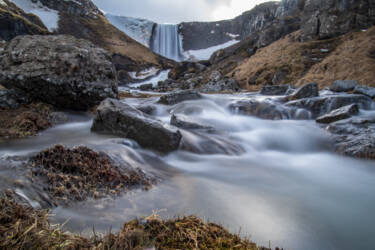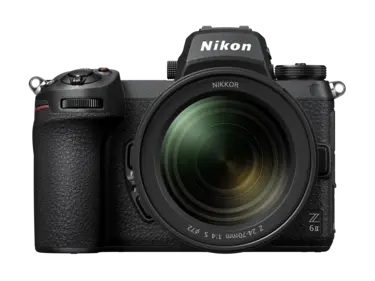The essential guide to filters: what to use for snow, water and effects
From boosting colour to reducing reflections and minimising glare, adding lens filters to your kit list will immediately level up your stills and films. Here’s everything you need to know
At the beginning of their photography journey, many people focus on what camera body and lenses to use. As you progress and get comfortable with your gear, more options to be creative with your photography open up via lighting gear and accessories. In this article, we’ll cover one of those accessories: lens filters. Varying in purpose and design, lens filters can help you do everything from cutting reflections and glare to capturing great long-exposure images.
What exactly are lens filters?
Lens filters are small, treated pieces of glass that go in front of your camera lens to achieve the desired effect. They’re commonly used to manage lighting conditions, particularly outdoor lighting, when taking photos and videos.
Common functions of lens filters include:
- Minimising glare
- Increasing or decreasing contrast
- Boosting colour
- Reducing reflections
- Reducing light coming through the lens
And more. Some filters combine two or more of these functions. Filters that combine a polariser and neutral density (ND) filter are a common example of that in action. Certain filters are used purely for a creative effect to give images a certain look, such as the Pro-mist filter we’ll cover later in the article.
How do lens filters work?
Depending on the type of filter system you use, they’ll either be circular filters that are exactly the size of your camera lens, or square pieces of glass that fit into a holder mounted to your camera. Four types of lens filters you’ll commonly see are:
- Circular filters. These are also called ‘screw-on’ filters because, you guessed it, they screw on to the front end of your camera lens. They’re round and can be made of one or multiple pieces of glass. Once attached, you turn a moveable ring to adjust the effect.
- Square filters. Square pieces of glass designed to fit into an attachment in front of your camera lens. Instead of different thread sizes, like circular filters, different adapters for the filter holder allow you to use different sizes of square filters.
- Drop-in filters. Designed to fit in a container near the back of your camera lens, this type of filter is commonly used with telephoto lenses. They sometimes have a large front element that doesn’t allow them to be screwed on to the front of your lens like a circular filter.
- Rectangular filters. A favourite of landscape photographers, these filters provide a bit more coverage in front of the lens, meaning you’re less likely to get uneven spots in your image. Rectangular filters fit into a holder in front of the lens the same way square ones do.
Why use a lens filter at all?
Buying an extra piece of glass that isn’t a fancy camera lens might seem unnecessary, especially if you’re familiar enough with your camera to be using it in full manual mode. However, lens filters allow for an array of creative photography options. Most of the stunning landscape, long-exposure or motion blur images you’ve seen on social media were probably created with one.
A good lens filter can also improve the quality of your image in various ways. It can increase sharpness and contrast, correct an undesirable colour cast or provide a way to get the right exposure when it wouldn’t otherwise be possible. In a purely utilitarian sense, it also protects your front lens element from scratches and damage.
Now that we have a better idea of what lens filters are and what you can use them for, let’s examine some of the more commonly used kinds of lens filters.

Polarising filters
Polarisers cuts glare and reflections from things in your environment such as glass and water. They also help bring out the colours in an image and even out the exposure by bringing colour back into the sky. You can think of these like the lenses on a pair of polarised, high-end sunglasses, but adjustable.
Polarising filters come in both circular and square options. Like most filters, circular polarisers (CPLs) take a little practice to get the hang of. They work best at the height of the day when the sun is overhead, less so at sunrise and sunset. The applications of a polarising filter include reducing window reflections in street photography, cutting glare on the water’s surface in landscape photography, and evening out the sky during harsh midday photo sessions.
Here you can see how I used a CPL to cut the reflection from a car window. Here’s with the polariser (left) and without (right).
Polarisers can be adjustable or fixed at a certain wavelength of light. CPLs are adjusted by rotating them once they’re attached to the front of your lens and seeing how the image changes through your camera’s viewfinder or live view display.
Neutral density (ND) filters
ND filters are invaluable tools for controlling exposure for both photography and videography. These filters come in multiple shapes and intensities and can be either fixed at a certain amount of exposure darkening or adjustable. How many stops of light you’re able to dim down your exposure by will depend on the type of ND filter you buy. The one I have from ProMaster ranges from one to eight stops of light. Other manufacturers make ND filters that block out up to ten stops of light.
Because they dim your exposure, ND filters let you keep your shutter open longer to gather more light even in the daytime. You can shoot portraits at super-wide apertures such as f/1.4 or get long exposures that blur motion. Like polarisers, circular ND filters can be adjusted by rotating them until you reach the desired strength. In this image, I used an adjustable ND filter to capture motion blur in the traffic on the road:
Without the filter, I had to increase my shutter speed quite a bit to even out the exposure, which didn’t let me get the same motion blur effect.
ND filters are also great for landscape photography. Those images of waterfalls with beautifully blurred water? Probably long exposures using an ND filter. In this image, I used my ND filter to capture a long exposure of a small lake, smoothing out the water on the surface.
As with the traffic image, taking the ND filter off meant I had to adjust my shutter speed, which froze the water in motion and lost that glass-like smoothness I got with the filter on.
ND filters can also be combined with polarising filters both to cut glare and reduce the amount of light entering your lens. You’ll see this combination a lot in landscape photography where there’s bright snow, harsh midday light or reflections on water that need to be reduced to create the best image.
Some filters already have a polarising element included. Others, allow you to ‘stack’ filters on top of one another by screwing them together or placing them in front of one another in a holder.
There are also graduated neutral density (GND) filters. GNDs are treated to only have the exposure-reducing effect over part of the filter, with a gradient between the darkest part of the filter and transparent glass. These filters are usually used in situations where the photographer needs to control the exposure in a specific part of the image, such as dimming the sky and bringing out the colour while leaving exposure for the rest of the image unchanged.
Effects filters
Multiple filters exist purely for creating fun creative effects. You can get filters that create starbursts around every point of light in your photo, add a dreamy vintage look or simply change the colour of the light.
Common types of effects filters include:
- Starburst filters
- Coloured filters
- Close-up or magnifying filters (for close-up photography)
- Cinebloom or Pro-Mist filters
Effects filters are often used to add an extra creative boost to your image, whether through an interesting distortion, added colour cast or a nostalgic look. Pro-Mist filters, for example, reduce contrast and bloom out highlights for a softer-looking image. I used a 1/4 strength Pro-Mist filter to capture this image of a streetlight at night:
Notice how soft and fuzzy the light from the streetlamp appears. The filter gives it a soft, almost cinematic look. Without the filter, the quality of light is more normal.
Effects filters can be combined with other filters such as a polariser or ND filter for even more possibilities. It’s important to note that while the effects they produce are certainly visually interesting, you shouldn’t rely on them completely to create a compelling image. Experiment with them and figure out what you like. That’s how you will learn to use them well.
Choosing a lens filter
Like a lens, a filter is a tool. Think about what images you want to make, then choose the best filter for that purpose. Want to cut window reflections during street photography trips? Try a polariser. Want to photograph portraits at a wide aperture during the day, or film video in harsh daylight? You’re going to need an ND filter.
If you’re using circular filters, know your filter thread size so you can match it to your lens. My NIKKOR Z 35mm f/1.8 S lens, for example, has a filter thread size of 62mm, so the filters I bought for it all have the same. You can find your lens’ filter thread size on the ring around the front element and/or the barrel of the lens. It will be a number next to a symbol that looks like a zero with a line through it. On my 35mm lens, it would look sort of like this: Ø62.
Try to find the right balance of quality and cost when shopping for lens filters. The most expensive may not be the right one for you, but cheap plastic filters will probably deliver an inferior result. A decent glass filter is usually a safe bet and Nikon has a range of high-quality filters that will perfectly match NIKKOR lenses.
And that’s it! Your guide to lens filters. Grab a few and test them out on your next shoot. They just might give you a little bit more creative inspiration.
Discover our festive content
Featured products
More in technology and know-how

Unlock greater creativity















